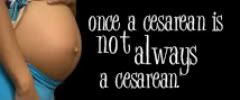 |
| My three-year-old saw this picture and asked, "Is that a real Barbie? Is that a real doll? She is cutting her hair." LOL No traumatizing here... |
A few years ago I posted a picture of Ruby, The "Anti-Barbie" and compared her with the current bizarre Mattel brainchild, Bratz dolls. A little backstory: a dad and his daughter were at the mall somewhere, caught a glimpse of The Body Shop's Ruby ad, and he basically flipped out and said his daughter was "traumatized." (I'm curious how many Victoria's Secret mannequins they had passed during that shopping trip.) Mattel then stepped in and took over.
After filing a cease and desist order to The Body Shop, the ad got pulled.
What I didn't realize was that this ad campaign originally debuted over a decade ago in 1998, before Twitter and Facebook, and as one writer put it, "If something went viral, it usually required a trip to the doctor's office." Now with the virtual explosion of social media, Ruby made somewhat of a comeback.
Since I first saw that ad two years ago, and I really haven't thought much about Ruby since, until I started making Barbie clothes for my daughter's dolls. As I studied patterns and then the mass-manufactured clothes, I remembered that ad and the freak out episode Mattel had surrounding it.
It seems that Mattel's energy is misdirected in their efforts to get the Body Shop to cease and desist: she looks, really, nothing like the "real" Barbie, and is merely a representation of a doll, any doll, not just Barbie. There are copycat Barbies everywhere, so why not go after those people, too?
Strangely enough, it didn't appear as though Mattel were going after the manufacturer of the doll, just the people who are showing us the image. So in other words, they can't stop someone from actually making a doll like this, but they can just try their hardest to keep us from seeing it.
Ironically, in the late 1950s, Barbie's creator had been to Germany and saw a similar doll, called Bild Lili, taking it back to the US to her husband, the co-founder of Mattel. The irony of Barbie's debut smacks of theft, in some ways. Later, Mattel acquired the rights to the German company, and Barbie's European cousin was no longer produced.
If Ruby were to really be created as a doll for the public market, it seems like she would threaten Barbie's livelihood about as much as Barbie moved in on Bild Lili's territory back in 1959.
There are countless styles of fashion dolls out there, many re-tooled and redesigned by adult collectors whose vast collections of Barbie-like dolls, clothing, shoes and furniture would make any kid envious. They are often produced in Japan, and can be made to look like celebrities, rugged men, glamourous women with excessively large breasts - just about anything you can think of - except overweight. And we know that even with two body redesigns (which may have been prompted by the Ruby ad, along with cries of protest by concerned parents), Barbie and her gorgeous body is still not really what the average American woman looks like, a size 14 - which is more like what Ruby looks like (as the ad truthfully suggests).
 |
| Because we all know that nurses everywhere wear satin scrubs and sky-high heels. It was either this or the astronaut costume. |
So Mattel was upset by the image of Ruby, yet condones the sexed-up, almost prostitute-ish look of Bratz dolls in their skimpy, barely-there clothing, platform shoes and heavy makeup. Barbie's own wardrobe generally consists of unrealistic, often revealing clothing, a complete departure from the original designs that were miniature versions of clothing real people would wear. Much like today, when the doll was first introduced, parents protested her unrealistic chest size. Despite the protests of parents now about the appearance of the Bratz doll, they still continue to be top sellers.





0 comments:
Post a Comment